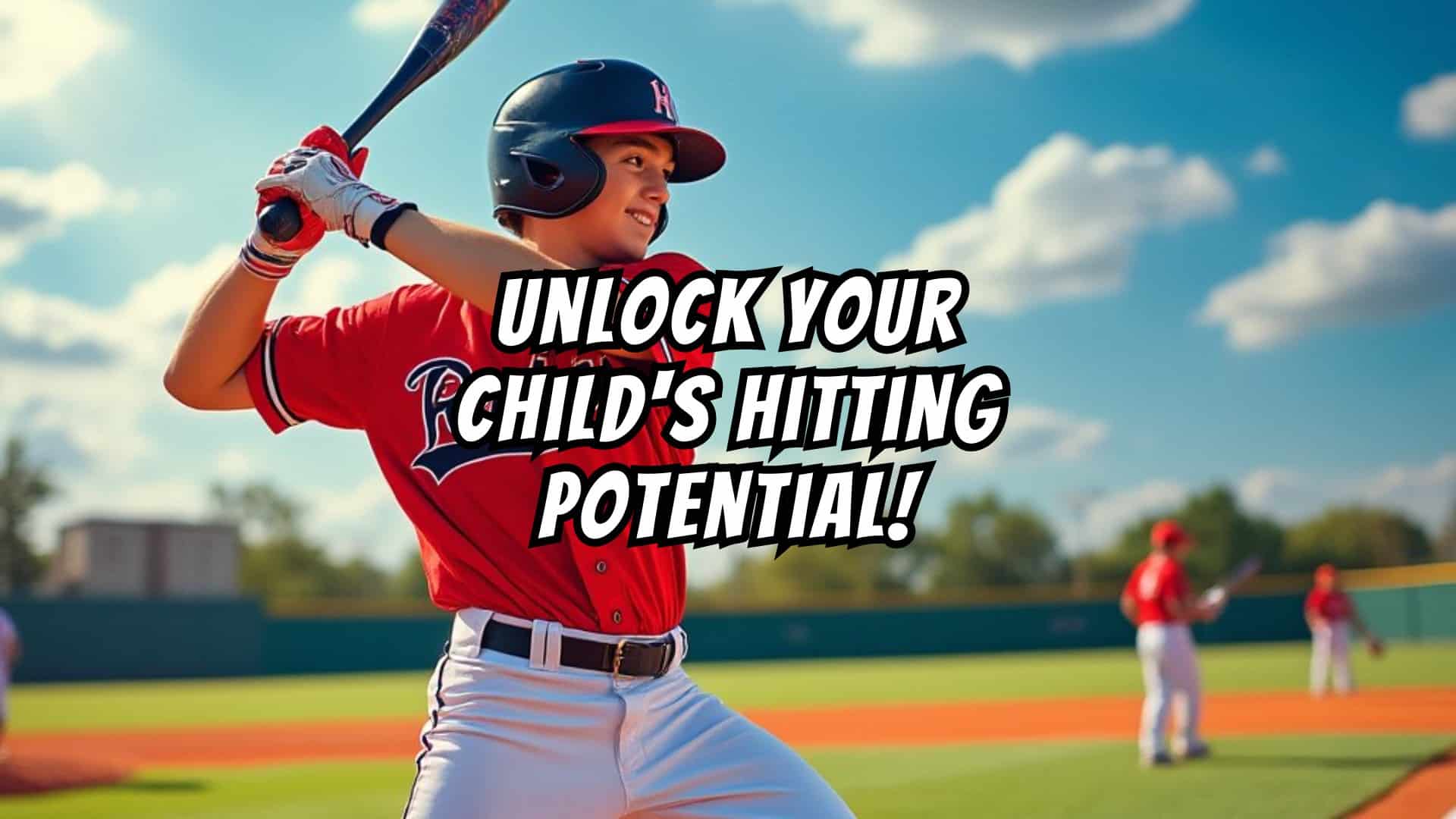Master Pitch Recognition & Swing Timing Fast: Visual Drills And Velocity Training to Transform Your Child

Stop Guessing at the Plate: The Surprising Science Behind Chunking the Strike Zone for More Quality Hits
Did you know baseball players face may only see 12 good pitches to hit per game? With pitches coming every 10-20 seconds, they get about four at-bats per game, and 3-strikes per at-bat. This makes quick pitch recognition and timing key for young players. In this guide, we’ll show you how to boost your hitter’s visual skills, reaction time, and power.
For any youth baseball player, mastering pitch recognition and timing is the ultimate goal. But old training methods often miss the mark. They use quick soft toss drills that don’t feel like the real game. We’ll explore proven methods that focus on quality over quantity. These methods also offer feedback to help your child improve with every swing.
Key Takeaways
- Mastering pitch recognition and swing timing is crucial for young baseball players
- Traditional training methods often fail to replicate game-like conditions
- Science-backed approaches prioritize quality reps, constructive feedback, and developing visual skills
- Specialized training tools can help accelerate skill development
- Investing in targeted pitch recognition and timing drills can transform your child’s performance
Understanding Visual Skills Development for Young Hitters
Young hitters need strong visual skills to do well in baseball. These skills include recognizing pitches, knowing the strike zone, and moving their eyes effectively. Training these skills can greatly improve their hand-eye coordination, reaction time, and confidence at the plate.
Broad vs Fine Focus Techniques
Hitters must learn to switch between a wide view of the pitcher and a sharp focus on the ball. The broad focus lets them see the pitcher’s whole body and mechanics. The fine focus is on the exact moment the ball is released. This skill helps them guess the type and location of the pitch better.
Strike Zone Awareness Training
Knowing the strike zone well is key for young hitters. Training for strike zone awareness helps them decide better at the plate. They can tell balls from strikes more accurately. This improves their pitch recognition and boosts their hitting confidence.
Eye Movement Pattern Development
Good eye movement pattern development is vital for visual skills. By learning to follow the ball from the pitcher’s hand to the hitting zone, young hitters can get better at hand-eye coordination drills and reacting fast. Tools like Game Sense Sports, vision boards, and Strobe Sport Training Glasses are great for this.
Regular practice of these visual skills can unlock a young hitter’s full potential. It leads to better strike zone awareness and performance on the field. By focusing on these essential visual skills, coaches and players can reach new levels in their game.
Baseball Pitch Recognition Drills for Kids
Learning to recognize pitches is key for young baseball players. Drills like the Random Pitch Drill help kids see and time pitches better. This drill focuses on fast or slow pitches.
The ‘Fisherman or Hunter‘ drill teaches kids to adjust their swing based on the pitcher. This drill helps them make better swing choices. Practicing with tee work, soft toss, and live batting also improves hitting.
Since 2015, MLB has used vision training to boost pitch recognition. These drills should feel like real games. Studies aim for players to identify pitches early, usually within 10 feet of the pitcher’s release point.
Players should aim to recognize pitches 80% of the time. It might take 3 to 6 practices per week to get better. Keeping track of progress helps see how far they’ve come.
For 9 and 10-year-olds, the challenge is hitting pitches from peers, not coaches. This is typically the crucial age at which recreational leagues switch from machine/coach pitch to kid pitch. I would even say, earlier, like at 7-8 years old. Those first couple kid pitch years are awful, but get it out of the way early is my motto!
Power Development and Swing Mechanics
Help your child unleash their batting power with better more effective techniques. These methods focus on more than just leg and hip strength. They use the body’s natural movements to create explosive batting power.
Heavy Bat Training Methods
Heavy bat drills are a game-changer for building muscle and strength. They help your child develop the power needed to hit the ball hard. These power drills improve bat speed and torque.
Tee Work Progression
Tee work is still key for improving swing mechanics early on. Some coaches hate tee work for their hitters, pointing to hitters not hitting off a tee in games! Problem is, how the heck is a young hitter going to juggle new physical movements AND timing elements?! They aren’t. The hitter doesn’t have to spend a whole session on the tee, but it’s a good starter to get the neuromuscular system on the same page before introducing timing elements like soft toss, underhand front toss, and overhand. These exercises help with bat control, balance, and hitting the ball square.
Soft Toss Power Development
Soft toss drills mimic game pitches but are closer. They help your child focus on explosive power and swing timing. Drills like the ‘bounce’ Drill improve balance and bat speed.
Use science-backed batting techniques, power drills, and swing mechanics to unlock your child’s hitting potential. Get ready to see amazing performances on the field!
Timing Mastery Through Scientific Approaches
Unlocking the secrets to swing timing and batting performance analysis needs a scientific method. By learning the basics of scientific hitting techniques, your child can better recognize pitches. They will also improve their swing timing.
The “Start Slow & Early” method, used by MLB star Jose Bautista, is key. It teaches the swing like an Olympic archer, focusing on a controlled load phase. Important metrics like bat speed, launch angle, exit velocity, and time to contact help improve your child’s swing.
Tools like radar sensors, high-speed cameras, and motion capture are very helpful. They give valuable data to improve your young hitter’s game. This scientific method can unlock their full potential and help them excel at the plate.
This is a video in the Swing Shift series…
Boost your hitting skills with Swing Shift’s science-backed practice system! This program is packed with features to improve hand path stability, timing, and power. Enjoy engaging drills for consistent progress and fun challenges to keep training exciting. Swing Shift is designed to help players succeed at every level.
The Swing Shift platform lets you focus on key mechanics like bat angle, balance, and hand path control. Dive into step-by-step video lessons that cover power, contact, and rhythm, breaking down the science behind a great swing. With personalized feedback and progress tracking, you can refine your technique and watch your results improve.
Whether you’re a youth athlete, high school player, or elite hitter, Swing Shift is trusted by families and coaches everywhere. Master core skills like bat control, weight transfer, and rotational power with drills designed for real game results. Start your journey to hitting greatness with Swing Shift!
Swing Shift’s practice system offers a wide range of tools to elevate your hitting:
- RNT-based drills for real-time correction
- Engaging challenges for competitive practice
- Personalized training goals and skill progression
- Exclusive videos on timing, power, and consistency
- Hands-on feedback to track and improve your swing mechanics
- Trusted by dedicated parents, players, and coaches
Reach your full potential with Swing Shift’s comprehensive practice system. Elevate your hitting with cutting-edge techniques and proven, science-based training.
Conclusion
Mastering pitch recognition and swing timing is key for young baseball players. It helps them improve their hitting. Coaches can help by focusing on visual skills, using drills, and scientific methods.
Creating a tough training environment is crucial. It should feel like a real game, not just practice. Tools like Win Reality’s virtual reality training and Vizual Edge’s pitch recognition programs are very helpful. Perry Husband also has a really good system, named Effective Velocity, you should check out as well.
With a good training plan, coaches can help players reach their best. Learning to recognize pitches and time swings well boosts confidence. This lets young hitters do their best at the plate and grow their skills.
FAQ
What are the key aspects of visual skills development for young hitters?
Improving visual skills for young hitters involves several key areas. It’s important to focus on the pitcher’s overall physique and delivery. Also, paying close attention to the release point window is crucial.
Training on strike zone awareness is also vital. This helps in recognizing pitches better and reacting faster. Developing consistent eye movement patterns also boosts a hitter’s ability to read pitches.
What are some effective pitch recognition drills for kids?
There are several drills that can help kids improve their pitch recognition. The Random Pitch Drill is one, where hitters look for either fast or slow pitches. Another effective drill is the ‘Fisherman or Hunter’ approach.
This teaches hitters to adapt their strategy based on the pitcher’s tendencies. Tee practice, soft toss, and live batting practice also help develop consistent contact.
How can power development and swing mechanics be improved?
Improving power and swing mechanics involves several strategies. Heavy bat drills can build muscle and boost strength without affecting swing mechanics. Tee work and soft toss drills are also helpful.
The ‘bounce’ technique can enhance balance and timing during weight transfer. This leads to increased bat speed, better control, and improved hitting performance.
What are the scientific approaches to timing mastery?
Timing mastery in hitting involves understanding several key aspects. Load phase timing, pitch recognition, and consistent contact drills are crucial. The ‘Start Slow & Early’ technique, as used by Jose Bautista, is a good example.
It emphasizes preparing the swing like an Olympic archer. Metrics like bat speed, launch angle, exit velocity, and time to contact are essential for assessing and improving performance.
- Fix Late Swings Fast: 2025 Pitch Recognition & See-Decide-Swing Training for Youth Baseball Power Hitters - October 6, 2025
- Safe Youth Weighted Bat Training: Proven Overload/Underload Drills to Increase Exit Velocity in Games Starting Tonight - September 29, 2025
- AI Coaching Course 2025: Youth Baseball & Softball Practice Plan + Off-Season & In-Season Workout Builder Fast - September 23, 2025




